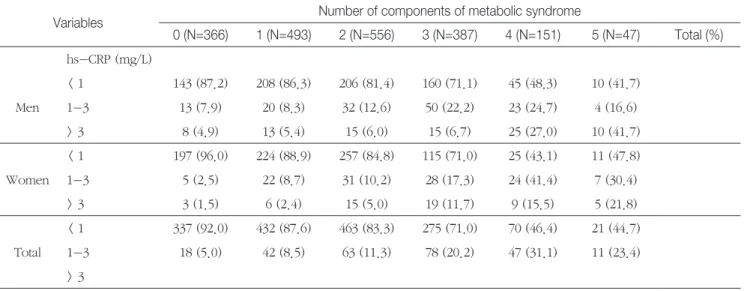Gender difference in the association of metabolic syndrome with hs-CRP Concentration of Blood
전체 글
수치




관련 문서
In this study, if the cell potential increases in voltaic cell environment and the effect of charge increases with applied external voltage, it promote s phase change
(5) From experimental results it is found that when wave height increases the magnitude of cross flow displacement increases, this results can be easily seen in
•Each cycle is operated as a constant volume batch culture, in which the concentration of substrate decreases, while that of biomass increases.. VS
As the application of materials having transparent property-of-matter including glass increases sharply in modern architectural space, 'transparency' has become
Activated H-Ras expression in human fibroblast cell lines increases the activity of Ku80 to bind injuried DNA, reduces γ-H2AX expression by UV irradiation,
As a result of 1 st clean flotation, it found that various bubble size distribution increases its recovery and increasing of bias increases its grade,
§ Each effect creates two positive loops: One increases sales through market share gains, and one increases sales through expansion of the total size of the market.. Chapter
4. In the case of the outermost orientation angle of 0 °, the maximum / mean load increases slightly with the increase of the number of interfaces, but in the FEM, the maximum